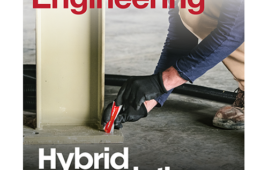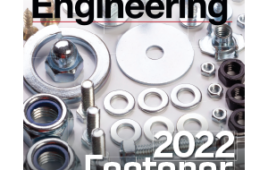The significance of small choices
Years ago, during a high-school woodworking course, our instructor would walk through the shop, repeating: “It’s the nuts and bolts that count!” Students would laugh or roll their eyes. Interestingly, he rarely questioned students about the type of wood selected for a project (though I still have the chestnut bench I made back then) but he would frequently ask about the type of bolt or screw used (“Hex or flat-headed…coarse or fine-threaded?”). He even taught us about threadlocker though we never used it.
Little did I know that class was my first introduction to fasteners, or that I’d work as an editor decades later for a new Fastener Engineering publication. What his lesson taught, which is still critical in the fastener industry, is small choices matter — greatly.
The “nuts and bolts,” though too-often overlooked at the design stage of an application, typically provide structural integrity, reliability, and safety. This means the choice of fastener (including the type, material, and quality) is significant. So, too, is the tool used for its installation. For example, thanks to that high-school elective, I learned over-driving may lead to excess pressure on the fastener, resulting in a compressed washer or damaged screw. The use of an incorrect tool or setting for an application can also ruin fasteners and result in structural failures.
Of course, the fastener market is ubiquitous, reaching far beyond woodworking. These devices are small but provide a significant role in nearly every industry (just try naming a sector that exists without the use of fasteners in some capacity). Despite challenges, such as tariffs or foreign manufacturing, it’s still a growing market according to several reports. This is undoubtedly a tribute to the people in the industry, many of whom are longtime coworkers or a part of a family business. At the 2019 Fastener Expo, my first industry trade show, I was impressed by the openness, kindness, knowledge, and friendships shared by the fastener community.
Women In The Fastener Industry (WIFI), for instance, recently celebrated its 10-yearanniversary supporting women in the industry through education and mentorship. Education is also available for those who are new or veterans to the sector, including basic, advanced, and certified training courses to ensure workplace safety and success.
In the pages that follow, we also hope to offer insight, providing information on several standard products available, including adhesives, bolts, latches, levers, rivets, sockets, screws, washers, and other components. You may be familiar with some of the topics and we hope others offer new information.
So, welcome to the inaugural issue of the Fastener Engineering Handbook, which aims to share insight into the broad range of tools and components that connect parts together.
Thank you for reading!
Michelle Froese – Editor
[email protected]





I have downloaded your 2019 and 2020 Handbooks. They are very good primers for young Engineers. (I am 64, been an ME since 1979) I would nominate them for all ME graduates across the country. Or at least the links for same. Trouble is it could get lost in the rush of information going by. I agree that fasteners play a role in almost all areas of technology and are frequently overlooked. Nuts and bolts do matter.